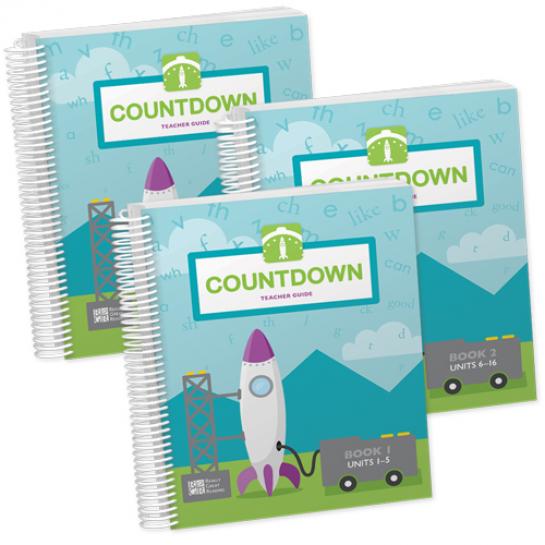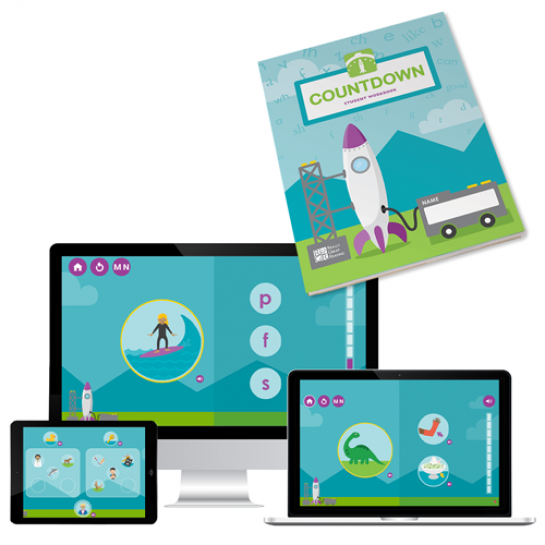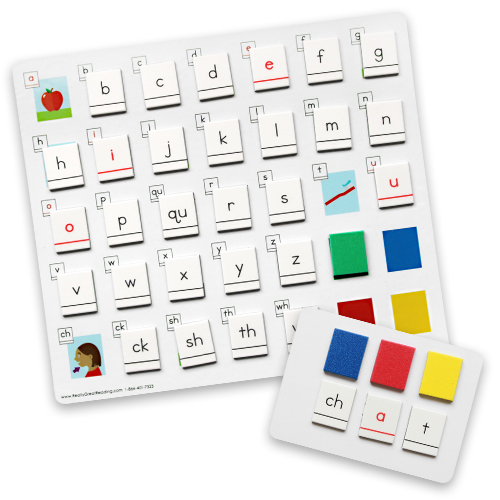Countdown™ for Kindergarten
Countdown is an essential preventative supplement to any core kindergarten reading program. This powerful, sequential, and efficient exposure to key literacy concepts ensures that your students establish a firm foundation in the subskills that lead to strong decoding and fluent reading.
Reading Intervention: RTI Tier II, early intervention for K–1, and intensive small-group intervention for emerging readers in Grades 2–3
Explore Countdown & Download a Sample Lesson
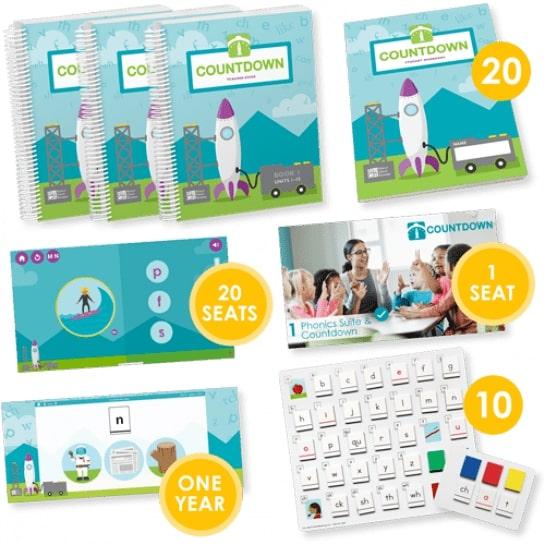
Countdown Classroom Setup with Virtual Components
- 1 x Countdown Teacher’s Guide Lesson Plan Set (Book 1, 2, and 3)
- 20 x Guided Practice Student Workbooks-used with Teacher’s Guide Book 3
- 1 x Countdown Online™ School-year subscription
- 10 x Countdown Student Kits (2 students share one kit)
- 20 x Reading Playground school year licenses (student seats)
- 1 x Virtual Implementation Teacher Training Course seat
- 1 x Poster Set
- 1 x Wall Card Set
All the lessons are built for the teacher and include a thorough explanation of the concepts, routines, and procedures. The lessons are easy to follow so they can be taught by a wide range of educators, not just seasoned literacy professionals, and phonics specialists. For those unfamiliar with teaching phonemic awareness and phonics, the guides include incremental professional development for each lesson.
Learn more about Countdown Classroom Setup with Virtual Components:
Individual A-la-carte Materials for Replacement or Reorder
New to implementing or adding new classes? Check out the full Countdown Classroom Setup.
Countdown Teacher Guides
Countdown Lesson Plan Set CDLP
Have fun while teaching the alphabetic principle, phonological awareness, encoding, decoding, and rhyming. By the end of the year, students understand the substructures of single-syllable words like hush, flash, pond, and dust, and two-syllable words like catfish, sunset, and insect.
Countdown Teaching Tools
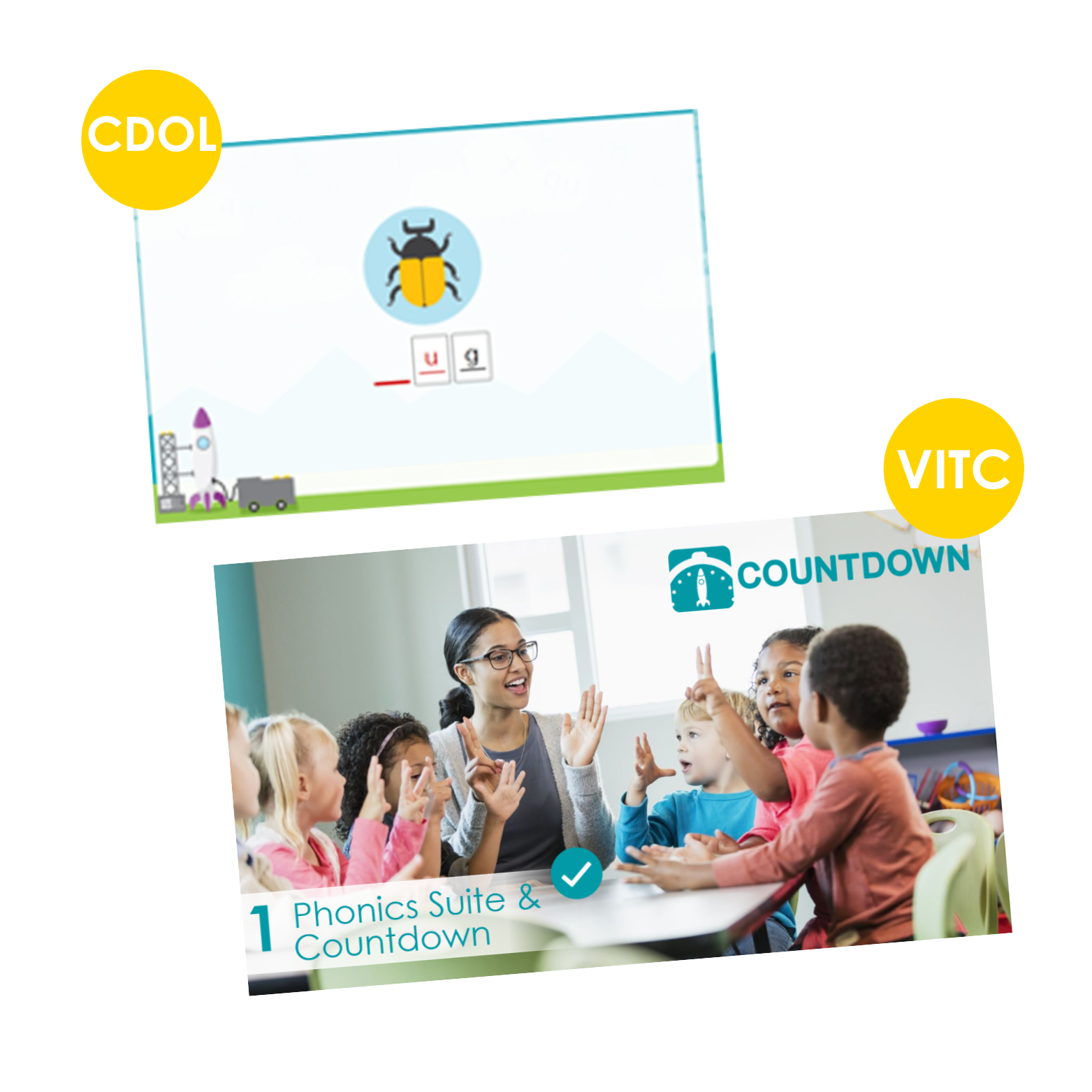
No more setup or laminating! This Teacher Guide companion illustrates the lessons and engages your students.
Countdown Virtual Implementation Training VITC_CD
Teach with fidelity and ease! Take this self-paced course and prepare for an exceptional implementation.
Countdown Student Practice
Countdown Student Practice PG_CDSW
Ensure the best student outcomes! Practice makes perfect with this Reading Playground and the Student Workbook bundle.
Countdown Student Kit
Provides multisensory learning! During the lessons students learn more effectively when they take in information in a variety of ways: auditory/listening, visual/observing, tactile/touching.
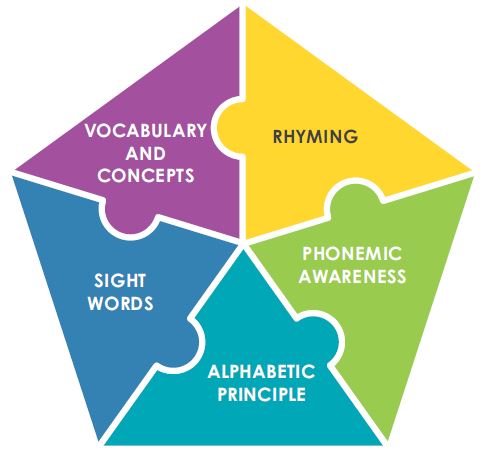
Countdown is Organized In Strands
Functional Vocabulary and Key Concepts For students to participate in and benefit from direct phonemic awareness and phonics instruction, they first need to understand specific vocabulary and key concepts. Initially, Countdown lessons introduce concepts and vocabulary (such as one-to-one correspondence, first-next-last, same and different, and whole-part) through playful instruction, using words and images that are familiar to most young students. Once this foundational knowledge is well established, instructors may confidently use specific terminology and apply key concepts to teaching students about the sound structure of our language.
Rhyming Recognizing and producing rhymes is an early sign that a child is developing phonological awareness (a general understanding of the sound structure of language). These skills often emerge spontaneously as young children engage in language play. Rhyming ability may indicate that a child has begun to notice global similarities in patterns of sound within words. While rhyming can be fun and engaging, and all students may benefit from some exposure to it, it is just a first step toward building strong phonological awareness.
Phonemic Awareness Beginning Sound Isolation (BSI) Blending Segmenting Addition / Deletion Phonemic awareness is the understanding that spoken words are made of individual speech sounds, or phonemes, that can be combined in different sequences to create new words. The ability to manipulate phonemes (to isolate, segment, and blend individual sounds) supports students as they master the alphabetic code and apply this sound-letter knowledge to reading and spelling. Research shows that phonemic awareness has a powerful influence on early word decoding skills.
Alphabetic Principle Decoding Encoding Letter-Sound Relationships The alphabetic principle is the understanding that spoken words are composed of individual sounds, and that printed letters represent those sounds. Recognizing that there are predictable relationships between letters and sounds and that students can learn these relationships, is critical to their decoding success.
Sight Words Some words should eventually be known “by sight,” without analysis, either because they occur so frequently (high-frequency words), or because of their phoneme-grapheme (sound-letter) irregularities. In Countdown, we call these “heart words” because students should know them “by heart.” While it is possible to gain some phonemic (sound) information from the letters in these words when they are first encountered (‘come’ starts with /k/), the ultimate goal is to read such irregular words automatically, without conscious effort.
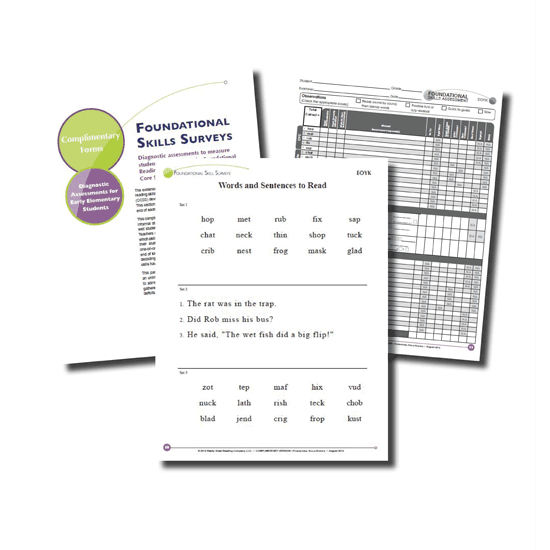
Kindergarten Foundational Skills Survey
There are three primary Kindergarten Foundational Skills Surveys found in this packet, each corresponding to one phase of the Kindergarten school year. Each assessment has a Form A (used for initial assessment) and a Form B (used for progress monitoring).
The three assessments are:
- Beginning of Year Kindergarten (BOYK), Forms A and B
- Middle of Year Kindergarten (MOYK), Forms A and B
- End of Year Kindergarten (EOYK), Forms A and B
They can be used throughout the year to measure students’:
- Functional Vocabulary
- Phonological/Phonemic Awareness
- Letter Knowledge
- Decoding
- High-Frequency Word Reading
Once the results of the surveys are gathered and scored, the data can be used to pinpoint specific deficits, group students, and then plan effective instruction. The Foundational Skills Surveys allow teachers to:
- Group students according to strengths and weaknesses
- Determine which skills students have mastered and which skills they are ready to learn
- Identify students that need additional assessments or support
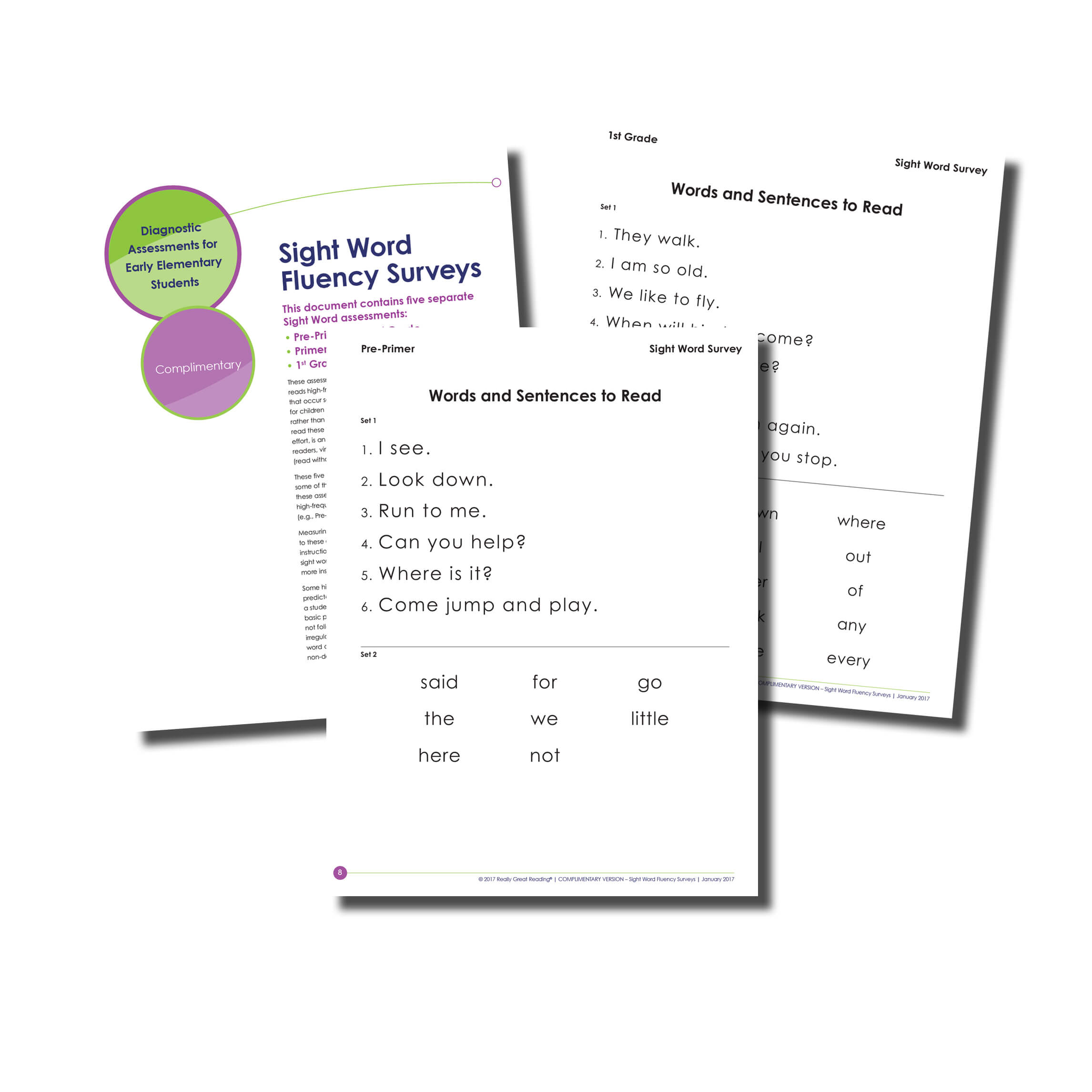
Sight Words Survey
The Sight Words Survey is a complimentary set of assessments that determine how well a student reads high-frequency English words. It is designed to be used:
- at the beginning of Kindergarten through 3rd grade
- and with older students who still struggle to read high-frequency sight words
One-on-one assessment of:
- High-frequency sight word knowledge from the Pre-Primer through 3rd-grade levels of the Dolch 220 list
- Automaticity reading sight words both in context (simple sentences) and in isolation
The data collected from these assessments can help determine the levels of sight words with which students are proficient and the levels with which they need more instruction and practice to gain automaticity.


